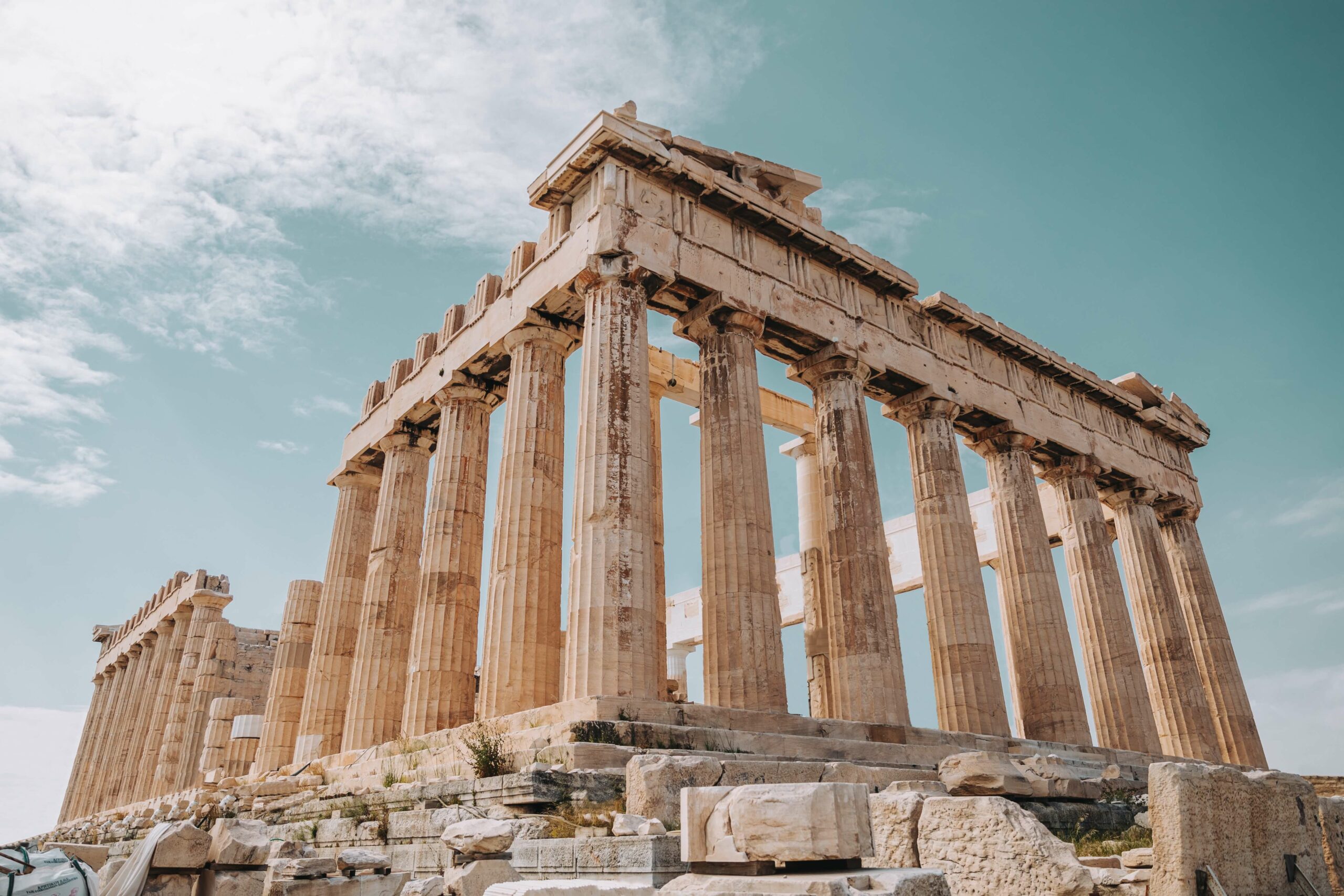Ancient Greek weddings were quite the affair, jam-packed with days of revelry, ritual, and ceremony as the bride’s family prepared to give their daughter away to her new beau.
For three days, the two families would gather together to eat, drink, and be merry as they bestowed blessings upon the couple for their upcoming vows.
The betrothed women were taught that it was their duty to strengthen the family by bearing many children, most notably a male heir.
For that reason, many ancient Greek wedding traditions and rituals focused on fertility, motherhood, and purity.
16 Ancient Greek Wedding Traditions and Rituals
1. Winter Weddings
In ancient Greece, our modern month of January was called “Gamelion,” which roughly translates to “wedding month.” Most ceremonies took place during Gamelion, though the moderate Mediterranean climate made for a more pleasant experience than those further from the equator.
This practice was in honor of Hera, the Greek goddess who oversaw all matters of love and marriage– despite her rather tumultuous relationship with her own spouse.
2. Formalized Matchmaking
Like in many ancient cultures, Greek marriages often occurred out of duty or political motivations rather than true love.
Thousands of years ago, Athenian daughters were their father’s assets, much like land or livestock. Their parents would marry them off without input from the bride-to-be, whether to bolster political relationships or improve financial outlooks.
Alternatively, families could outsource the work to professional matchmakers, though this was not a popular route.
3. Suitor Competitions
After their daughters reached puberty, fathers would announce that they were eligible to potential suitors. These men would gather at the family home and compete for the right to wed with dancing, singing, and games.
The bride-to-be rarely attended these events, but it was common for the fathers to consult with their wives before declaring a winner to ensure compatibility.
4. Engisys
After the competitions, the selected suitor and the family patriarch would complete the engisys ritual.
This formalized “hand pledge” and recitation was a formal contract of engagement, with both parties discussing the dowry and what skills the bride-to-be had to ensure she was a suitable homemaker.
Members of both families would attend as witnesses, as this was the only way that children borne from the couple could legally hold the status of an heir.
Otherwise, there was a high risk that relatives would attempt to dispute who had inheritance rights upon the death of either of the newlywed’s fathers.
5. Proaulia
Much like a modern bachelorette party, Athenian brides spent days leading up to the wedding with their female relatives and closest friends.
Rather than mimosa brunches and poolside lounging, the ladies prepared offerings to the gods in a process called proaulia, where the bride would give up her toys and clothes in recognition of her transition into adulthood.
Female relatives also spent this time passing down generations of knowledge about being a good wife, mother, and homemaker.
As the women prepared the bride for her big day, they would share their expertise and old wives’ tales to help her navigate the strange, new world she would soon find herself in.
6. Cutting the Maiden Hair
To appeal to Artemis, the goddess of virginity and childbirth, both ancient Spartans and Athenians would offer their hair during the proaulia in hopes of having a safe, successful birthing process.
Spartan women would have their heads shaved to the scalp, while Athenians opted for a less GI Jane approach by simply trimming off a single lock.
7. Pais Amphitales
The night before the wedding ceremony, the bride would sleep at the groom’s home. A young boy–precisely one with two living parents–would arrive to sleep in the same bed as the bride, symbolizing her future motherhood.
8. Nuptial Bath and Dressing
Brides began their wedding day, or gamos, with a ritualistic bath with special water delivered in a loutrophoros, a ceremonial pot filled with sacred water, to bring purity to the woman and fertility to the marriage.
Like cutting the maiden hair, this bathing was a physical representation of passing from childhood into adulthood.
Once the bath was complete, it was all hands on deck to dress the bride. The bridal tunic was quite luxurious. Because ancient Greek pottery is almost exclusively red, scholars aren’t sure what colors the jewel-encrusted gowns were, but some writings note shades of violet or silver with gold braiding.
A long, elaborate bridal veil symbolized her purity and would stay in place until her father officially gave her away to the groom.
The dress and jewelry selection was extravagant, often featuring a mix of custom-made pieces and family heirlooms adorned in precious jewels.
9. Temple Offerings
Before the ceremonial meal, the couple would gather at their local temple for yet another offering to the Greek deistic pantheon.
These sacrifices typically consisted of fruits, baked goods, and honey, representing a sweet and fruitful marriage.
10. Stephane Garlands
Both bride and groom would don garlands of asparagus. While it’s not most modern couples’ first choice of wedding headwear, its symbolism is rather charming.
Ancient Greeks chose asparagus because it produced delicious food despite being covered in thorns. Similarly, the newlyweds wanted to recognize that domestic life could be “prickly” and challenging at times, but from it, they could create a sweet, loving family together.
Along with the garland, women would also wear decorative headbands emblazoned with jewels that matched the colors of their tunic.
11. Ceremonial Feasting
With the gods sated, the guests would be invited to partake in a lavish feast hosted by either the bride or groom’s father, complete with plenty of wine, songs, and dancing to keep the mood merry.
The couple would sit at the head table dressed in their finery while guests sat at gender-segregated tables surrounding them.
12. Ekdosis
The giving-away ceremony was called ekdosis. It was often a very emotional time for the bride and her family because it was the final step of her transition into married life.
First, the father would grasp her wrist while reciting a ceremonial passage. As he finished speaking, he would pass the girl’s wrist to her new groom, officially marking that he had “taken possession” of her.
After giving verbal confirmation of his acceptance of his wife, the groom would lift the bridal veil and reveal his wife’s face to the world.
13. Mule-Cart Processional
To officially transition from her family home to the marital home, the families organized a torch-lit wedding procession that started at the bride’s house. Onlookers would gather as they marched to confirm the marriage’s legitimacy in society’s eyes.
The bride would ride in a mule-drawn cart with her husband walking beside her, still grasping her wrist. The guests and family would follow behind.
While it’s not exactly a fairytale carriage with regal white horses, it’s as close as any Athenian bride could hope to get.
14. The Wedding Party
The bride and groom were not the only vital roles in the wedding processional, with friends and family members taking on various parts to bless the newlyweds.
Beside the cart, the mother-of-the-bride would carry torches to ward away evil as family members played instruments, sang wedding songs, and carried a bounty of gifts.
As they marched, the young boy from the pais amphitales donned a garland of nuts, thorny branches, and foliage. He passed out bread from a basket to the rest of the processional to encourage the couple’s hopeful good fortune in producing a male heir.
15. Arrival at the Groom’s Home
Once the procession reached its destination, the groom’s mother would greet them, standing in the doorway of the family home, bearing two torches. This was meant to make the bride feel welcome as she crossed over the threshold of her new life.
As the bride dismounted her mule cart, she would accept a ripe fruit from a family member as the guests showered the newlyweds with dates, nuts, and other dried fruits as a final blessing.
In a theatrical end to the evening, the wife would set the mule-cart axel ablaze, symbolically severing the final link to her father’s home.
The groom would then escort his bride to their marital bed, where maidens and men would sing outside the door for the entire night.
16. Epaulia
The final event was the epaulia, which began with a gaggle of serenading handmaidens entering the newlywed’s bed chambers to wake up the couple with traditional songs.
The bride’s friends and family would gather at the groom’s home soon after to deliver heaps of gifts. Instead of toasters and Bed, Bath, & Beyond gift cards, the newlyweds could expect pottery, jewels, plots of land, work animals, and other domestic necessities.
Grooms would also receive a handwoven tunic from their brides before she made her way to the hearth to prepare a meal for all her new male relatives. To add to the anxiety as she hurried about her tasks, the women of the home would often gossip and titter about her cooking skills.
Only then could the festivities come to a close, with the bridal dedication of a loutrophoros to a nature spirit called a nymph in return for its protection over her marriage.




